Pulse Sequences
1/55
There's no tags or description
Looks like no tags are added yet.
Name | Mastery | Learn | Test | Matching | Spaced |
|---|
No study sessions yet.
56 Terms
Which of the following echo train lengths generate a set of images with the greatest signal-to-noise, assuming all other parameters are the same?
A. 16 ETL
B. 12 ETL
C. 3 ETL
D. 6 ETL
3 ETL
Which RF pulse is always absent in a gradient echo sequence?
180\xB0 refocusing pulse
A pulse sequence that begins with a 180\xB0 RF pulse, followed by a 90\xB0 RF excitation pulse, would be a(n):
inversion recovery
Which RF pulse refocuses a decaying spin echo?
180/xB0
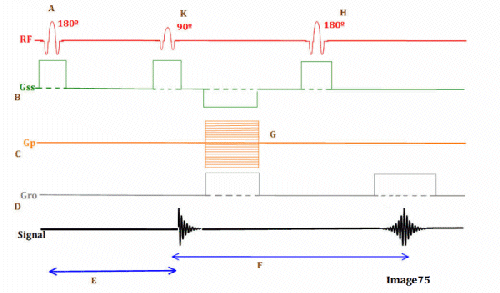
Letter F in Image 75 represents:
Echo time (TE)
Echo time is the
Time between the 90\xBA RF pulse and the peak of the signal in the receiver coil
Each train of echoes has what effect on the pulse sequence in a fast spin echo?
A. Increases SAR absorption
B. Reduces scan time
C. Lowers SNR
D. All of the above
All of the above
The repetition time (TR) is the:
Time between two 90\xBA RF pulses
What is the correct scan time for a spin echo sequence with the following parameters: TR 500 ms, TE 30 ms, matrix 208 x 208, 2 NEX, FOV 200mm?
3 mins 28 seconds (TR x Phase matrix x NEX = Scan time in milliseconds, / 1000 to calculate scan time in seconds
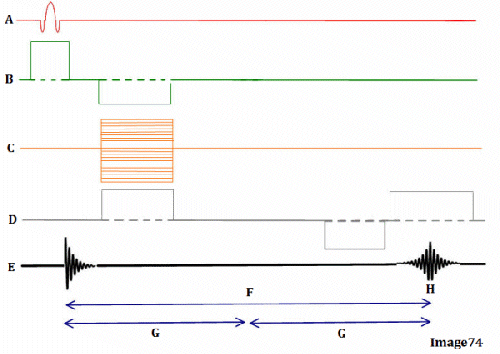
Letter G in Image 74 represents:
Tau (1/2 TE)
As the TR is increased,
I. SNR is increased
II. Available number of slices is increased
III. T2 information is maximized
I and II
In a Fast Spin Echo sequence, the effective TE are the echoes that are encoded:
With a low amplitude phase encoding gradient (This would occur at the line that is closest to the center of k-space (k0))
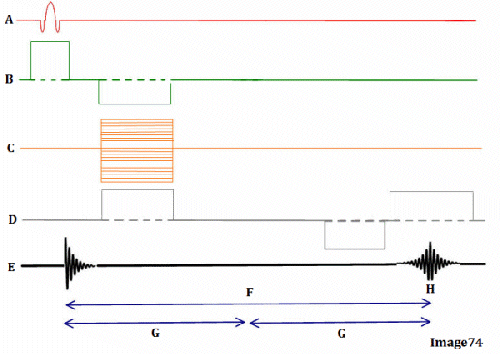
Image 74 is a diagram of which pulse sequence?
Gradient echo
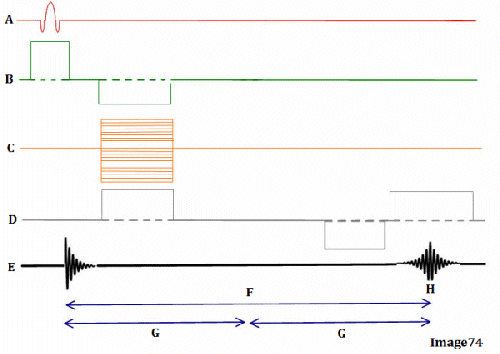
Letter A in Image 74 represents:
Radiofrequency (RF)
For a given number of slices, which of the following pulse sequences uses the most 180\xB0 RF pulses during each TR period?
A. Spin echo
B. Dual contrast spin echo
C. Gradient echo
D. Inversion recovery
Dual contrast spin echo
In an inversion recovery sequence, the time interval between the 180\xB0 RF pulse and the 90\xB0 RF pulse is the
TI (time inverion)
The timing of RF pulses in an MRI pulse sequence controls:
image contrast
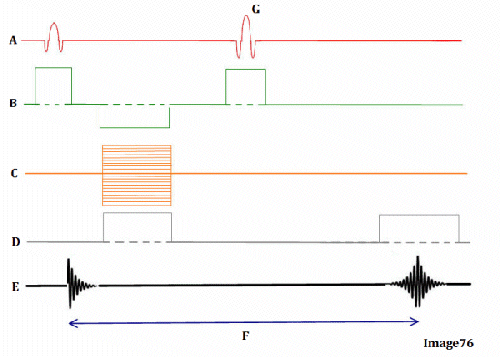
Letter A in Image 76 represents:
Radiofrequency (RF)
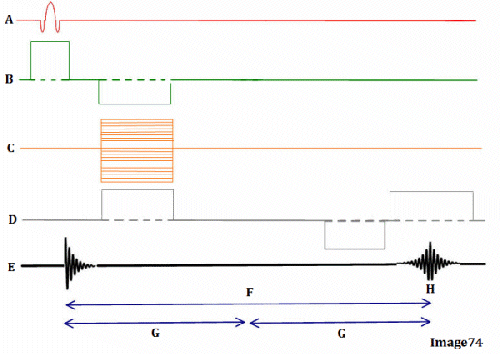
Letter F in Image 74 represents:
Echo time (TE)
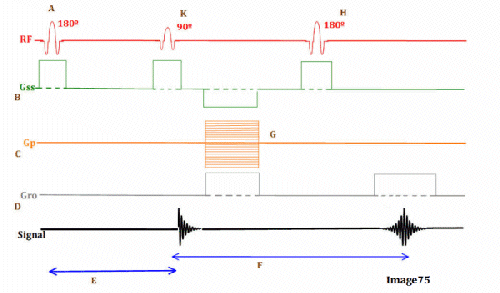
Letter B in Image 75 represents:
slice select gradient
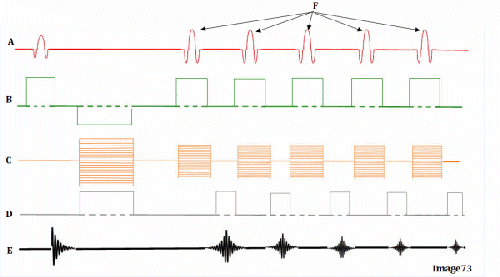
Image 73 is a diagram of which pulse sequence?
Fast spin echo
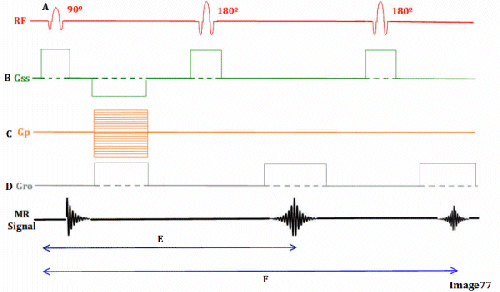
image 77 is a diagram of which pulse sequence?
dual echo spin echo
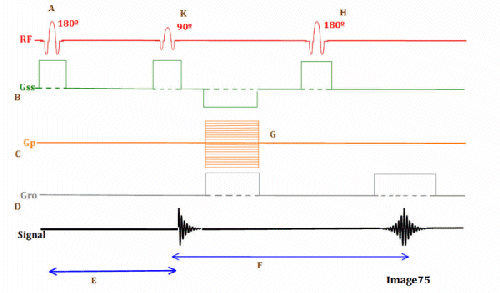
Letter H in Image 75 represents:
180\xBA RF pulse (refocussing)
In a spin echo pulse sequence, an echo is produced from:
A combination of two or more RF pulses
Conventional spin echo sequences begin with a __________ RF excitation pulse.
90\xB0 RF excitation pulse
In which of the following pulse sequences would you expect to find the shortest TR?
gradient echo
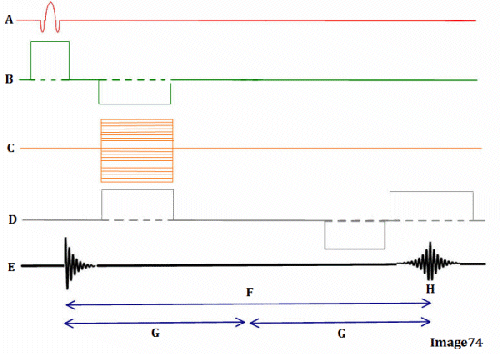
Letter D in Image 74 represents:
Frequency encoding gradient
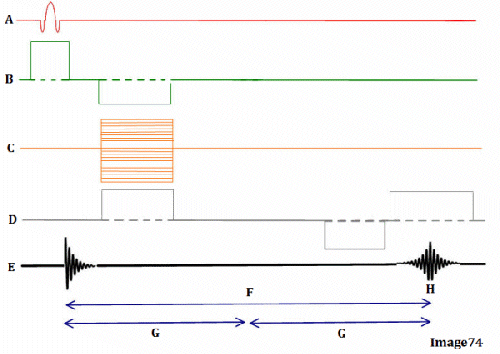
Letter C in Image 74 represents:
Phase encoding gradient
CSF suppression is performed with which type of technique?
FLAIR
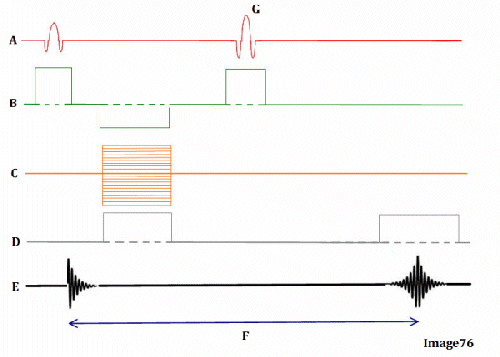
Letter F in Image 76 represents:
Echo time (TE)
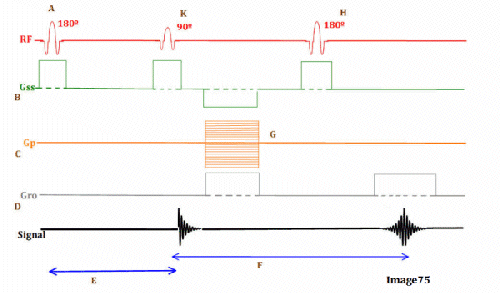
Image 75 is a diagram of which pulse sequence?
inversion recovery
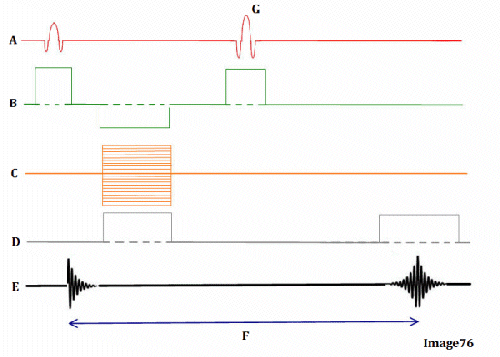
Image 76 is a diagram of which pulse sequence?
spin echo
In a spin echo sequence, the time between the 90\xB0 RF pulse and the 180\xB0 RF pulse is known as the:
½ TE
Lengthening TR with a short TE in a spin echo sequence will:
Increase PD weighting
What specifically is a SPGR sequence spoiling?
Transverse magnetization (The RF excitation pulse is phase shifted each time the RF is applied which prevents accumulation of the residual transverse magnetization effects throughout the acquisition.)
Which of the following echo train lengths generates images in the shortest amount of time?
A. 16 ETL
B. 12 ETL
C. 3 ETL
D. 6 ETL
16 ETL (Scan time formula --- TR x Matrix x NEX / ETL.... More ETL = faster scan time.)
The gradient that is on during the production of the echo is the:
frequency encoding gradient
All of the following are types of inversion recovery sequences EXCEPT:
DWI
FLAIR
3D-IR
STIR
DWI
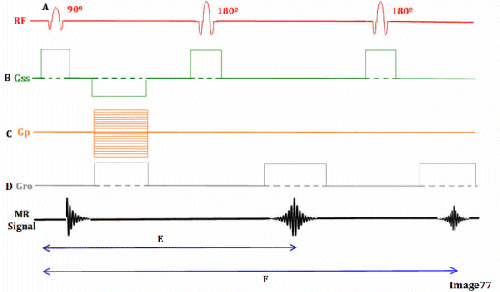
Letter E in Image 77 represents:
TE 1 (shorter TE)
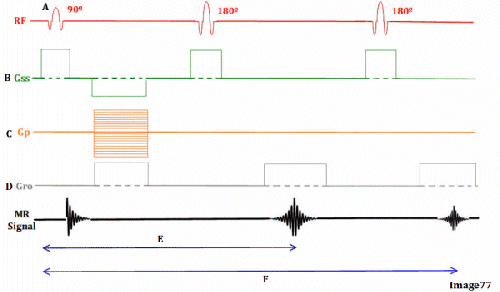
Letter F in Image 77 represents:
TE 2 (longer TE)

Letter G in Image 76 represents:
Refocussing 180\xBA RF pulse
Fast spin echo sequences are fast because:
More than 1 line of k-space is acquired in each TR period
In order to produce an echo in a gradient echo pulse sequence, a ___________ is used
gradient field and RF pulse
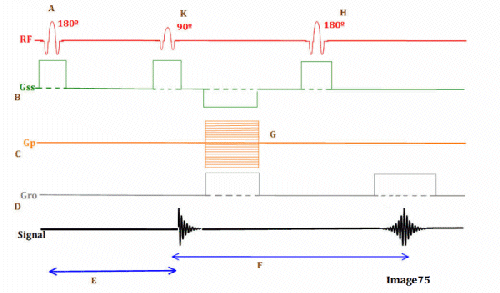
Letter K in Image 75 represents:
90\xBA RF excitation pulse
As the TE is increased,
I. The available number of slices is increased
II. The available number of slices is decreased
III. SNR increases
IV. T1 contrast is maximized
The available number of slices is decreased
A STIR sequence with a TI time of 160 ms will null signal from fat at what field strength?
1.5 Tesla
In a fast spin echo pulse sequence, if the TSE factor (echo train length) is increased by a factor of 3, the scan time will be:
3x faster
When performing a gradient echo pulse sequence, what is used to refocus the protons and create the echo?
gradient coils
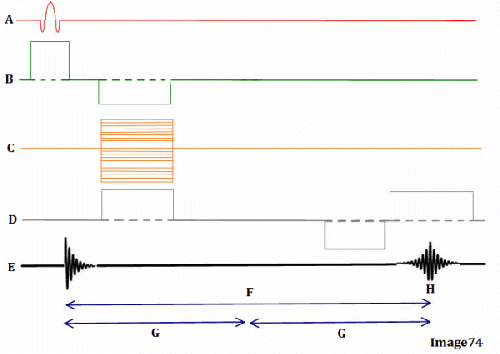
Letter H in Image 74 represents:
Peak signal for echo
Which of the following sequences is the most insensitive to magnetic field inhomogeneity?
Steady state rephased gradient echo
Echo planar
RF spoiled gradient echo
Spin echo
spin echo
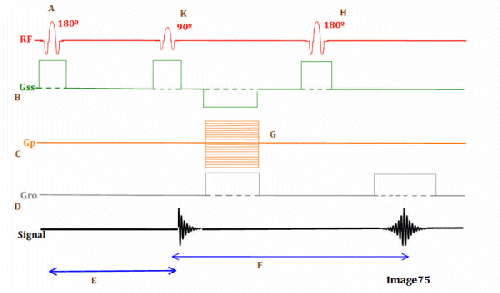
Letter E in Image 75 represents:
Inversion time (TI)
Which of the following combinations of flip angle (FA) and TR would produce a T2 weighted gradient echo?
450 TR; 30\xBA flip angle
In a dual contrast spin echo sequence with echo times of 25ms and 90ms, the second echo image has __________ than the first echo image
I. more T2 contrast
II. lower signal-to-noise ratio
III. more T1 contrast
I and II (longer TE’s= more T2 contrast but reduced SNR)
The fastest sequence commonly and currently available is:
Echo planar imaging
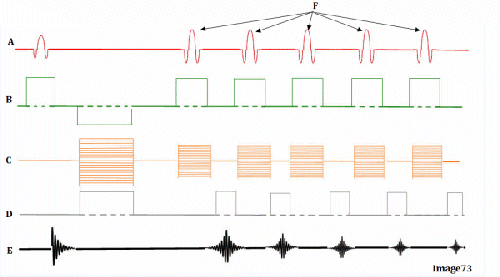
Letter F in Image 73 represents:
180\xBA RF pulses (echo train)
A fast spin echo sequence is faster than a conventional spin echo pulse sequence because:
Several echoes for each slice are collected during each TR period